The Blue Velvet Project
Blue Velvet, 47 seconds at a time by Nicholas Rombes
-
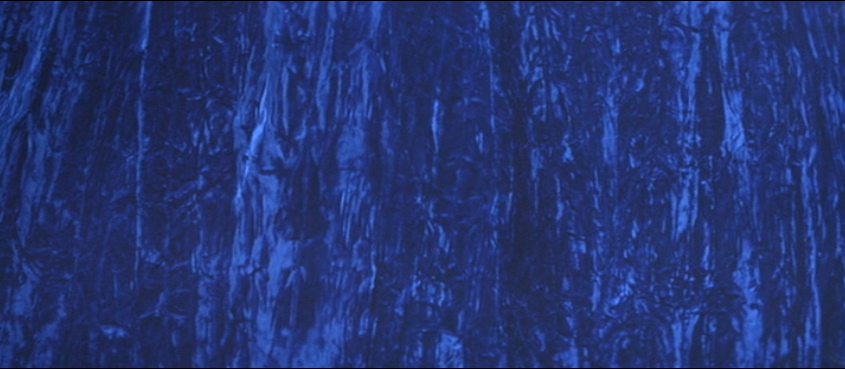 The Blue Velvet Project, #152
The Blue Velvet Project, #152
Second #7144, 119:04 [Final post. Thank you to Scott Macaulay for taking a chance with this.] The blue curtain, creating the conditions for its own strange, vertical, blue-noise static. Remainders: 45,000 = total words in project 2 = frames that feature Dorothy, Jeffrey, and Sandy together 3 = frames including Aunt Barbara 17 = frames in which no human being appears 20 = frames featuring Jeffrey and Dorothy 23 = frames featuring Jeffrey and Sandy Robin Wood, from his classic 1979 essay “An Introduction to the American Horror Film”: Some version of the Other [include, simply] other people. It is… Read more
-
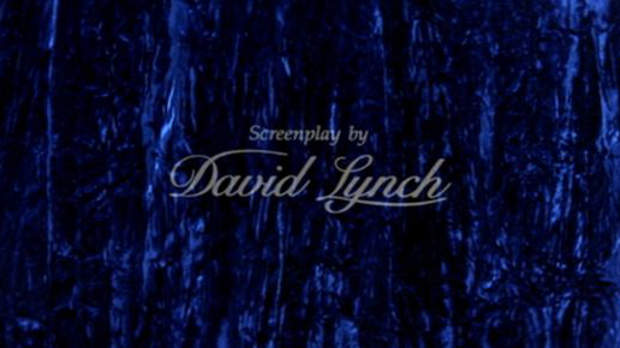 “Blue Velvet Project” Creator Nicholas Rombes
“Blue Velvet Project” Creator Nicholas Rombes
One year ago, Nicholas Rombes proposed “The Blue Velvet Project” to me at Filmmaker. For 12 months, three times a week, he would scrutinize a single frame from David Lynch’s modern classic, looking both inside and outside of its aspect ratio for correspondences, allusions and meanings. For Rombes, it would be another in his “time-based” critical film essays — appropriately so, for it was because of another of these columns, 10/40/70 at The Rumpus, that I discovered his writing in the first place. (In fact, I interviewed him previously about this other fascinating project.) Nick had contributed to Filmmaker before… Read more
-
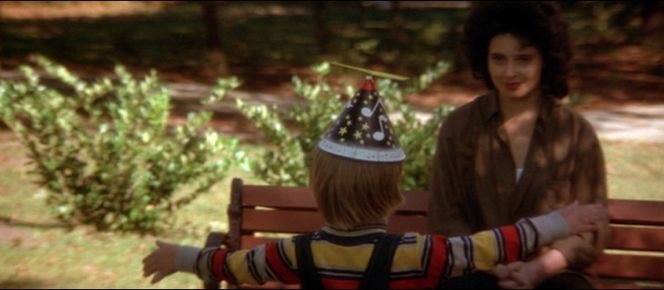 The Blue Velvet Project, #151
The Blue Velvet Project, #151
Second #7097, 118:17 (Note: the final post in the project goes up Friday.) A confession, of a different sort, about how a movie saved a young man. Can a scene from a movie detour your life, turn you in a new direction? I think it can, in the same way that a book read and just the right age can, or a band can by the sheer force of its ideas turned sonic. (One of the self-imposed rules for this project was to avoid the personal, the anecdotal, but figuring this is the second-to-last post . . .) Blue Velvet… Read more
-
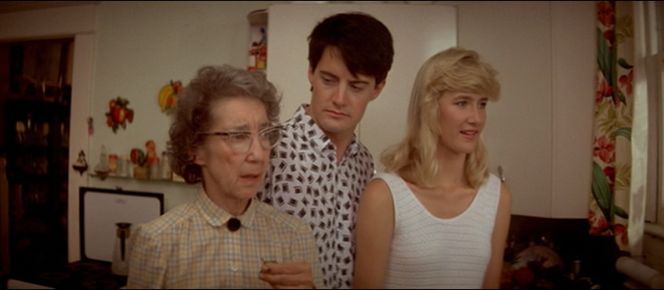 The Blue Velvet Project, #150
The Blue Velvet Project, #150
Second #7050, #117:30 It’s as if the movie has gone back in time; Jeffrey and Sandy look so young. “I don’t see how they could do that,” Aunt Barbara (Frances Bay) says, looking at the robin on the windowsill with the live bug (perhaps one of the black beetles from the beginning of the film) in its beak, “I could never eat a bug.” She speaks these words just before inserting something black into her mouth. In The Plague of Fantasies, Slavoj Žižek suggests that fantasy does not simply realize a desire in a hallucinatory way: rather, its function is… Read more
-
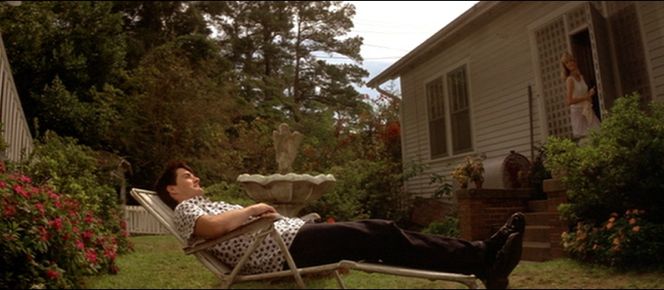 The Blue Velvet Project, #149
The Blue Velvet Project, #149
Second #7003, 116:43 The camera pulls back, low like in the beginning when it entered the lawn grass, to reveal Jeffrey, lounging, Sandy just having told him that “lunch is ready.” A concrete angel looks over him as he suns himself in his black pants and heavy black shoes. Order has been restored, but something has changed, something is different. You can feel it in the framing of the shot, in the oddly canted way that Sandy and the house bend inward, towards the center. In his recent book In the Dust of This Planet, Eugene Thacker questions the assumption… Read more
-
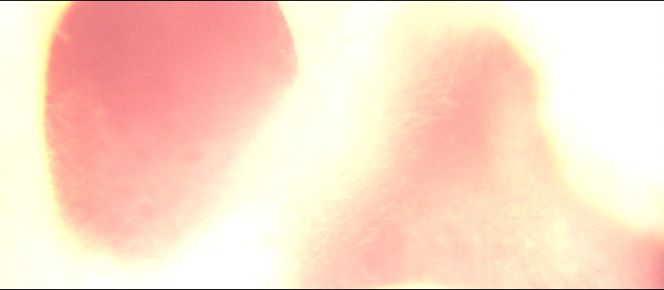 The Blue Velvet Project, #148
The Blue Velvet Project, #148
Second #6909, 115:09 (Note: there are six posts remaining in the project, which will conclude with #154 on August 24.) 1. The seconds preceding this frame show Sandy and Jeffrey in the hallway outside Dorothy’s apartment, embracing, kissing, the shot slowly blowing out to blinding white before fading back into this shot, a close-up of Jeffrey’s ear as he lays dozing (dreaming?) on a lounge chair in his parents’ back yard. 2. The black frame, from earlier, as balance. 3. Is Jeffrey emerging from the dream that has been the film? When Jeffrey awakes in his lawn chair in his… Read more
-
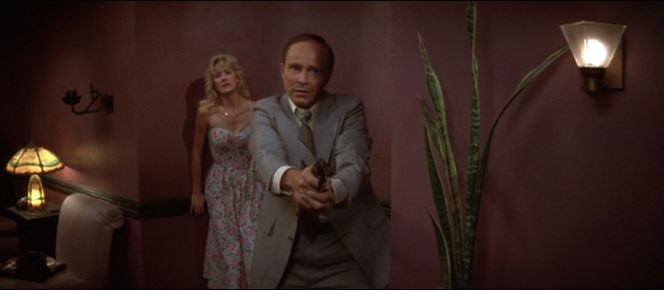 The Blue Velvet Project, #147
The Blue Velvet Project, #147
Second #6909, 115:09 Detective Williams arrives, too late. Everyone dead is dead. Jeffrey is alive, but not because of the Law. Sandy, behind her father, behind the gun, swoons, electrified and ready to be taken by Jeffrey. This post is as good a post as any to suggest that, just beneath its surface, Blue Velvet is a “trash” film. It’s so overloaded with references to Hollywood’s traditions that always threatens to implode in on itself, perhaps nowhere else more poignantly than in this frame, which evokes everything from noir to the “woman’s picture” to the classic crime film. In Avant-Garde… Read more
-
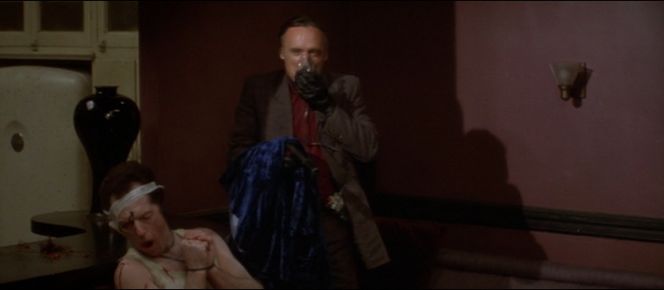 The Blue Velvet Project, #146
The Blue Velvet Project, #146
Second #6862, 114:22 In an unnervingly comic touch Frank approaches the closet where Jeffrey hides loaded up with his props, which include Dorothy’s blue velvet gown and his gas mask. He is the exterminator now, inhaling his chemicals, approaching Jeffrey and, ominously, the camera. For Frank has seen us, now. The invisible camera has been called out, hailed, interpolated. Frank stares back at us, returning our gaze, just as the bandit, gun in hand, did in Edwin S. Porter’s 1903 film The Great Train Robbery: Out of the shadows he comes, Dorothy’s tortured, neck and wrist bound husband at his… Read more
-
The Blue Velvet Project: Confession
Confession With just 9 posts to go, I herein and forthwith offer my final confession. As author of The Blue Velvet Project—which owes a moral debt to the Dogme 95 movement, whose practice of constraint was an inspiration—I feel obligated to make this public statement of confession regarding the rigors of the project. This is done in the spirit of Thomas Vinterberg’s confession regarding his film The Celebration. In post #143, I confess to knowing well in advance that I would not write much at all about the frame in question. I had been saving the William James quote for… Read more
-
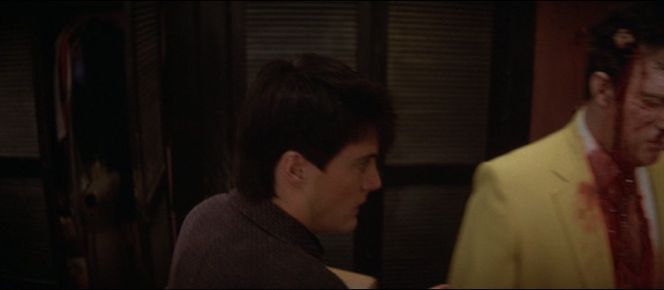 The Blue Velvet Project, #145
The Blue Velvet Project, #145
Second #6862, 114:22 Jeffrey, taking the gun from the Yellow Man’s jacket pocket, as Frank is in the bedroom, shooting. In addition to Jeffrey and the Yellow Man, there is the camera, or at least its presence, invisible in accordance with classical cinema’s codes, which, even after the deconstructive storms of postmodernism, are themselves invisible, having been absorbed into the very technologies that make film possible. In Blue Velvet, for the most part, the camera does not call attention to itself; most of its movement is motivated, aligned with, and justified by corresponding movements in the film’s narrative. And yet… Read more
